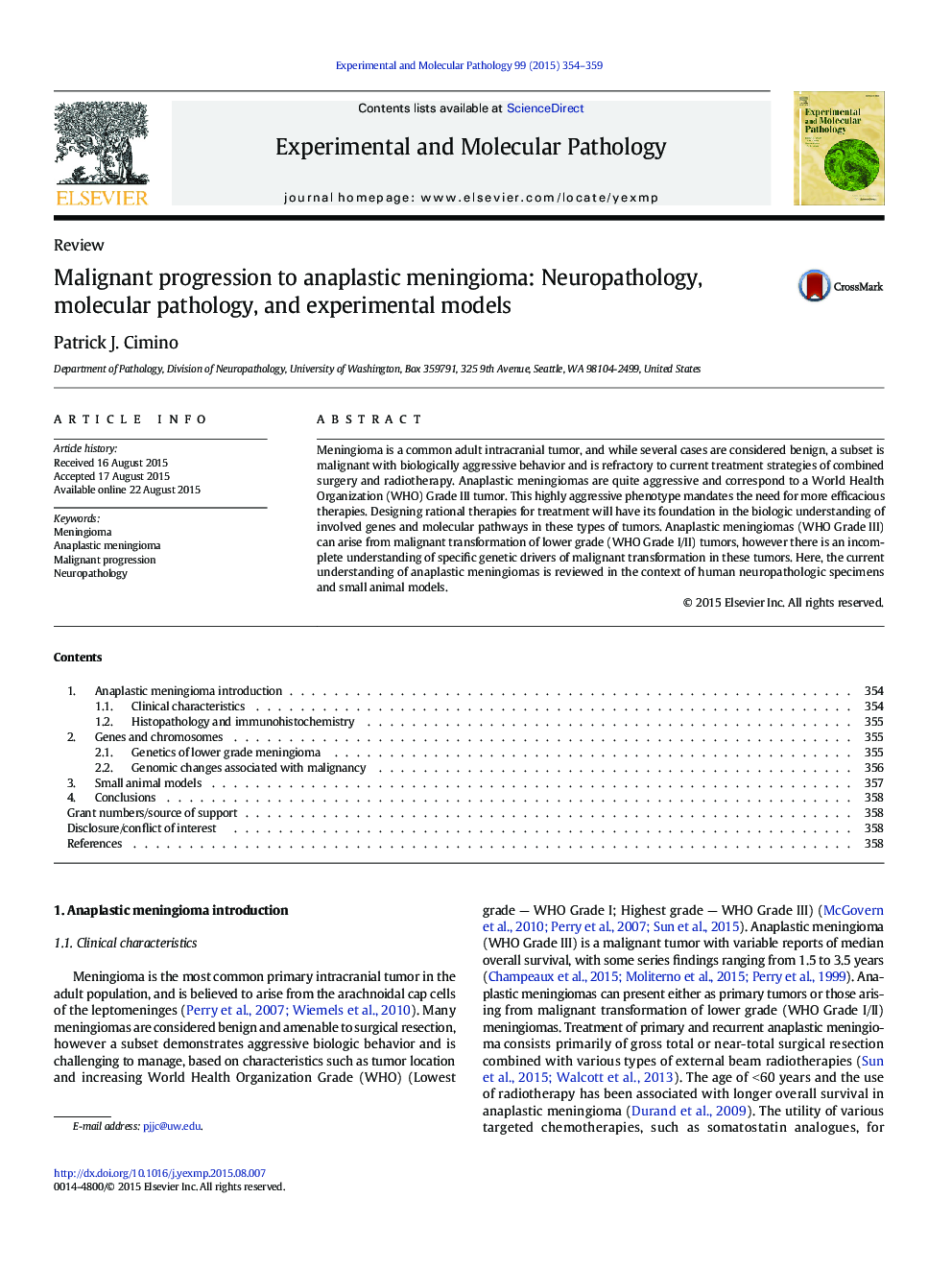| Article ID | Journal | Published Year | Pages | File Type |
|---|---|---|---|---|
| 2775034 | Experimental and Molecular Pathology | 2015 | 6 Pages |
Meningioma is a common adult intracranial tumor, and while several cases are considered benign, a subset is malignant with biologically aggressive behavior and is refractory to current treatment strategies of combined surgery and radiotherapy. Anaplastic meningiomas are quite aggressive and correspond to a World Health Organization (WHO) Grade III tumor. This highly aggressive phenotype mandates the need for more efficacious therapies. Designing rational therapies for treatment will have its foundation in the biologic understanding of involved genes and molecular pathways in these types of tumors. Anaplastic meningiomas (WHO Grade III) can arise from malignant transformation of lower grade (WHO Grade I/II) tumors, however there is an incomplete understanding of specific genetic drivers of malignant transformation in these tumors. Here, the current understanding of anaplastic meningiomas is reviewed in the context of human neuropathologic specimens and small animal models.
